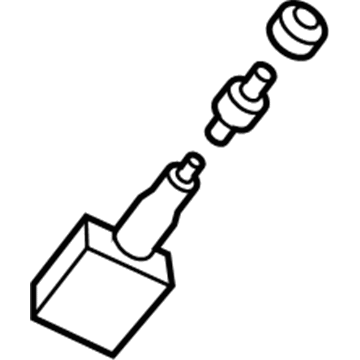FordParts
My Garage
My Account
Cart
OEM 2004 Mercury Mountaineer TPMS Sensor
Tire Pressure Monitoring System Sensor- Select Vehicle by Model
- Select Vehicle by VIN
Select Vehicle by Model
orMake
Model
Year
Select Vehicle by VIN
For the most accurate results, select vehicle by your VIN (Vehicle Identification Number).
1 TPMS Sensor found

2004 Mercury Mountaineer TPMS Sensor Part Number: 4L2Z-1A150-BB
$49.90 MSRP: $83.62You Save: $33.72 (41%)Ships in 1-2 Business DaysProduct Specifications- Other Name: Kit - Tpms Sensor; Tire Pressure Monitoring System (TPMS) Sensor; TPMS Sensor Service Kit; Tire Sensor; Pressure Sensor; Monitor; Sensor
- Replaces: TPMS-1, 4L2Z-1A150-BA
- Base No.: 1A150
- Item Weight: 0.30 Pounds
- Item Dimensions: 6.1 x 4.1 x 4.2 inches
- Condition: New
- Fitment Type: Direct Replacement
- SKU: 4L2Z-1A150-BB
- Warranty: This genuine part is guaranteed by Ford's factory warranty.
2004 Mercury Mountaineer TPMS Sensor
If you're seeking quality and affordability, look no further than our extensive inventory of genuine 2004 Mercury Mountaineer TPMS Sensor available at FordPartsDeal.com. You can confidently purchase our OEM 2004 Mercury Mountaineer TPMS Sensor as they are supported by the manufacturer's warranty and our hassle-free return policy, alongside the benefit of our fast delivery service.
2004 Mercury Mountaineer TPMS Sensor Parts Q&A
- Q: How to Service and Repair the TPMS Sensor on 2004 Mercury Mountaineer?A: To replace the tire pressure sensor, detach the wheel and tire assembly, attach a new grommet, and not to detach the valve stem core. Turn off tire pressure, take off sensor and eliminate grommet. Install, lubricate and inflate the beads, with appropriate torque, re-assemble with the new sensor.













